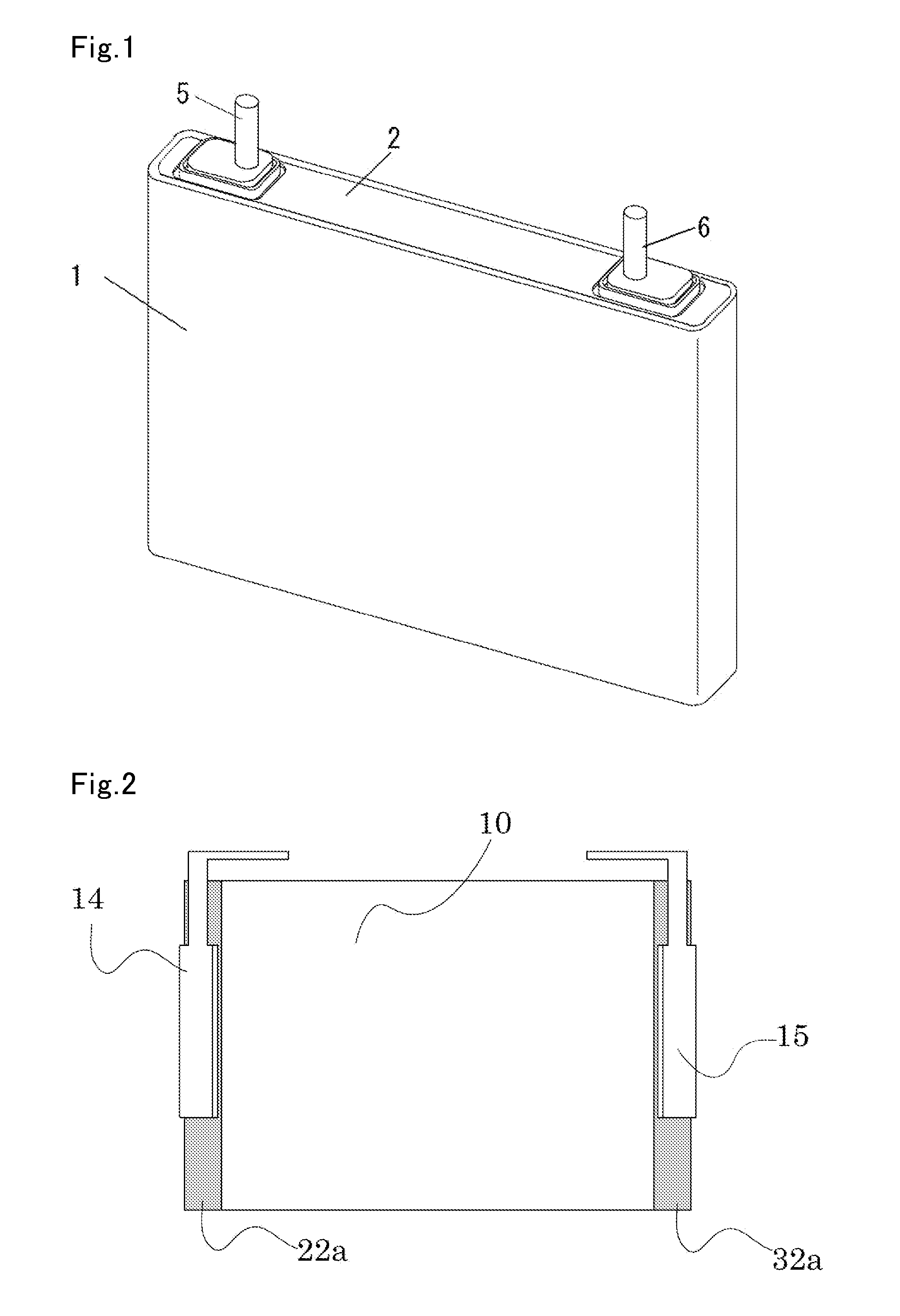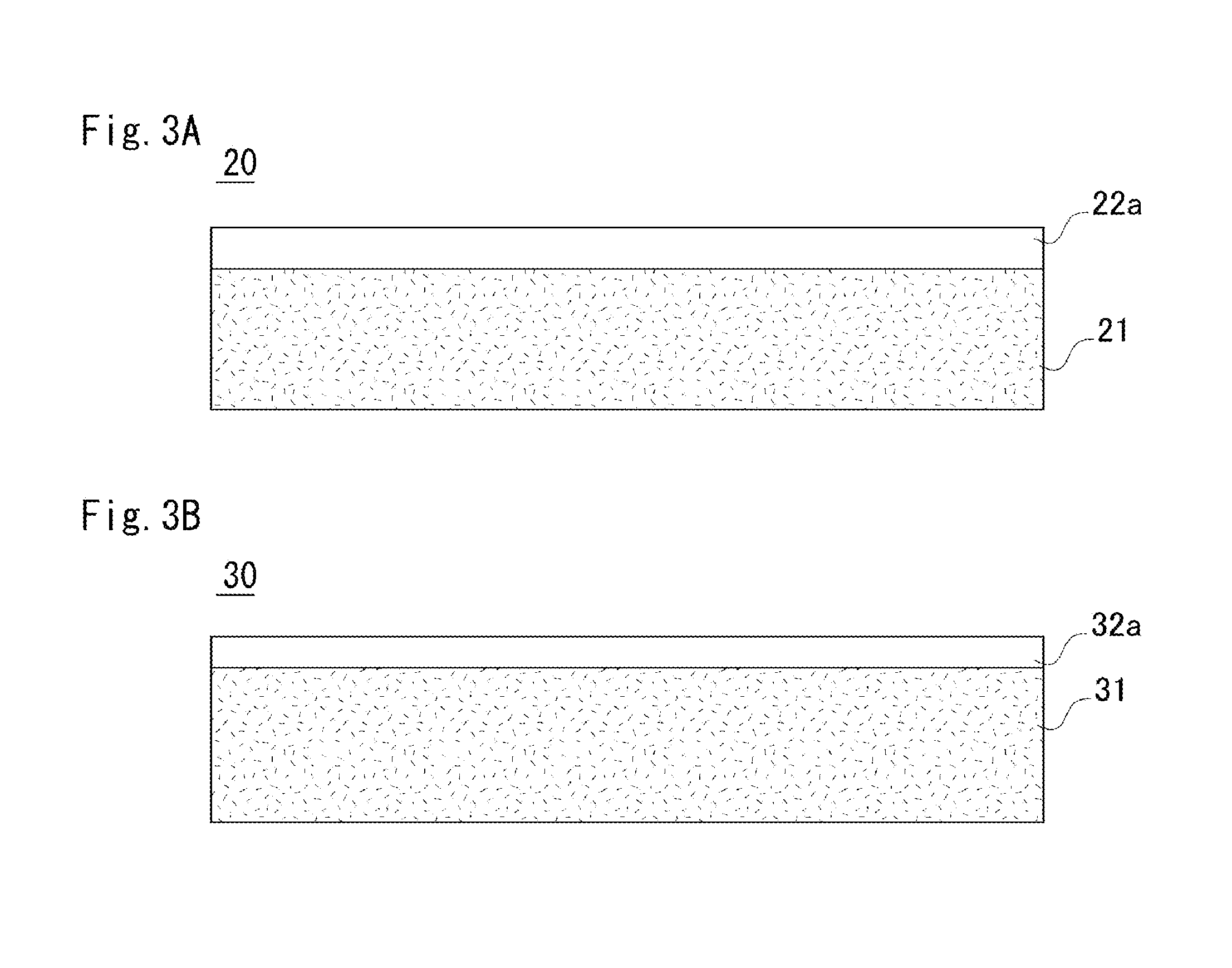Non-aqueous electrolyte secondary cell
a secondary cell, non-aqueous electrolyte technology, applied in the direction of cell components, electrochemical generators, cell component details, etc., can solve problems such as productivity degradation, and achieve the effect of improving safety
- Summary
- Abstract
- Description
- Claims
- Application Information
AI Technical Summary
Benefits of technology
Problems solved by technology
Method used
Image
Examples
embodiment 1
[0035]The present invention will be described below with reference to the drawings. FIG. 1 is a perspective view showing a non-aqueous electrolyte secondary cell according to the present invention. FIG. 2 is a diagram showing an electrode assembly used in non-aqueous electrolyte secondary cell according to the present invention. And FIG. 3 is a plan view showing electrode plates used in the non-aqueous electrolyte secondary cell according to the present invention. FIG. 3A shows a positive electrode, and FIG. 3B shows a negative electrode.
[0036]As shown in FIG. 1, the non-aqueous electrolyte secondary cell according to this Embodiment comprises a prismatic outer can 1 having an opening, a sealing body 2 for sealing the opening of the outer can 1, and positive and negative electrode external terminals 5 and 6 protruding outwardly from the sealing body 2.
[0037]As shown in FIG. 3A, the positive electrode plate constituting the electrode assembly comprises: a positive electrode core expo...
example 1
[0043]A positive electrode active material of lithium nickel cobalt manganese oxide (LiNi0.35Cu0.35Mn0.3O2), a carbonaceous conductive agent such as acetylene black and graphite, and a binder of polyvinylidene fluoride (PVDF) were weighed at a mass ratio of 88:9:3. Then, these were dissolved in an organic solvent such as N-methyl-2-pyrrolidone (NMP) and mixed to prepare a positive electrode active material slurry.
[0044]Then, using a die coater or doctor blade, etc., the positive electrode active material slurry was applied in a uniform thickness on both surfaces of the positive electrode core composed of a belt-shaped aluminum foil (thickness 15 μm). However, the slurry was not applied on one side edge (the same side in both surfaces) of the positive electrode core along the longitudinal direction, thereby forming a positive electrode core exposed portion.
[0045]This electrode plate was passed through a dryer to remove the organic solvent and to prepare a dry electrode plate. This dr...
example 2
[0063]A non-aqueous electrolyte secondary cell according to Example 2 was fabricated in the same manner as above-described Example 1 except that the thickness of the negative electrode protective layer is 3.5 μm, and the separator made of polyethylene having the thickness of 26 μm was used. In this cell, the thickness ratio of negative electrode protective layer / separator is 26.9%.
PUM
| Property | Measurement | Unit |
|---|---|---|
| porosity | aaaaa | aaaaa |
| thickness | aaaaa | aaaaa |
| particle diameter | aaaaa | aaaaa |
Abstract
Description
Claims
Application Information
 Login to View More
Login to View More - R&D
- Intellectual Property
- Life Sciences
- Materials
- Tech Scout
- Unparalleled Data Quality
- Higher Quality Content
- 60% Fewer Hallucinations
Browse by: Latest US Patents, China's latest patents, Technical Efficacy Thesaurus, Application Domain, Technology Topic, Popular Technical Reports.
© 2025 PatSnap. All rights reserved.Legal|Privacy policy|Modern Slavery Act Transparency Statement|Sitemap|About US| Contact US: help@patsnap.com



